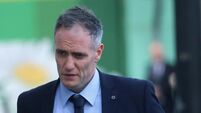Time to try and beat the quantitative easing addiction

ONE of Britain’s top bureaucrats, Lord McPherson, onetime top Treasury mandarin, has suggested that we are now addicted to quantitative easing (QE), the electronic money pump priming activity engaged in by central banks since 2009.
He has compared QE to a heroin habit.
















